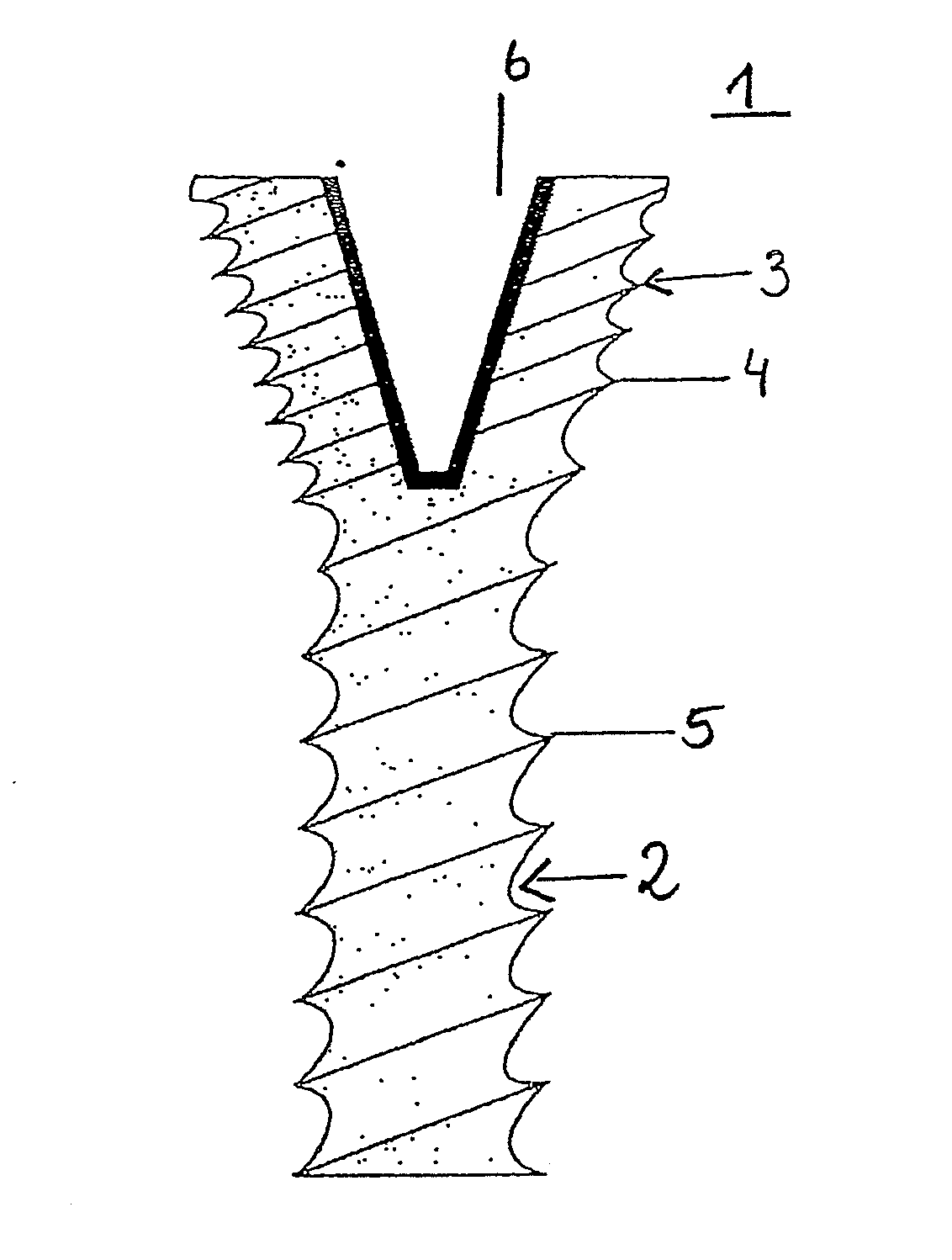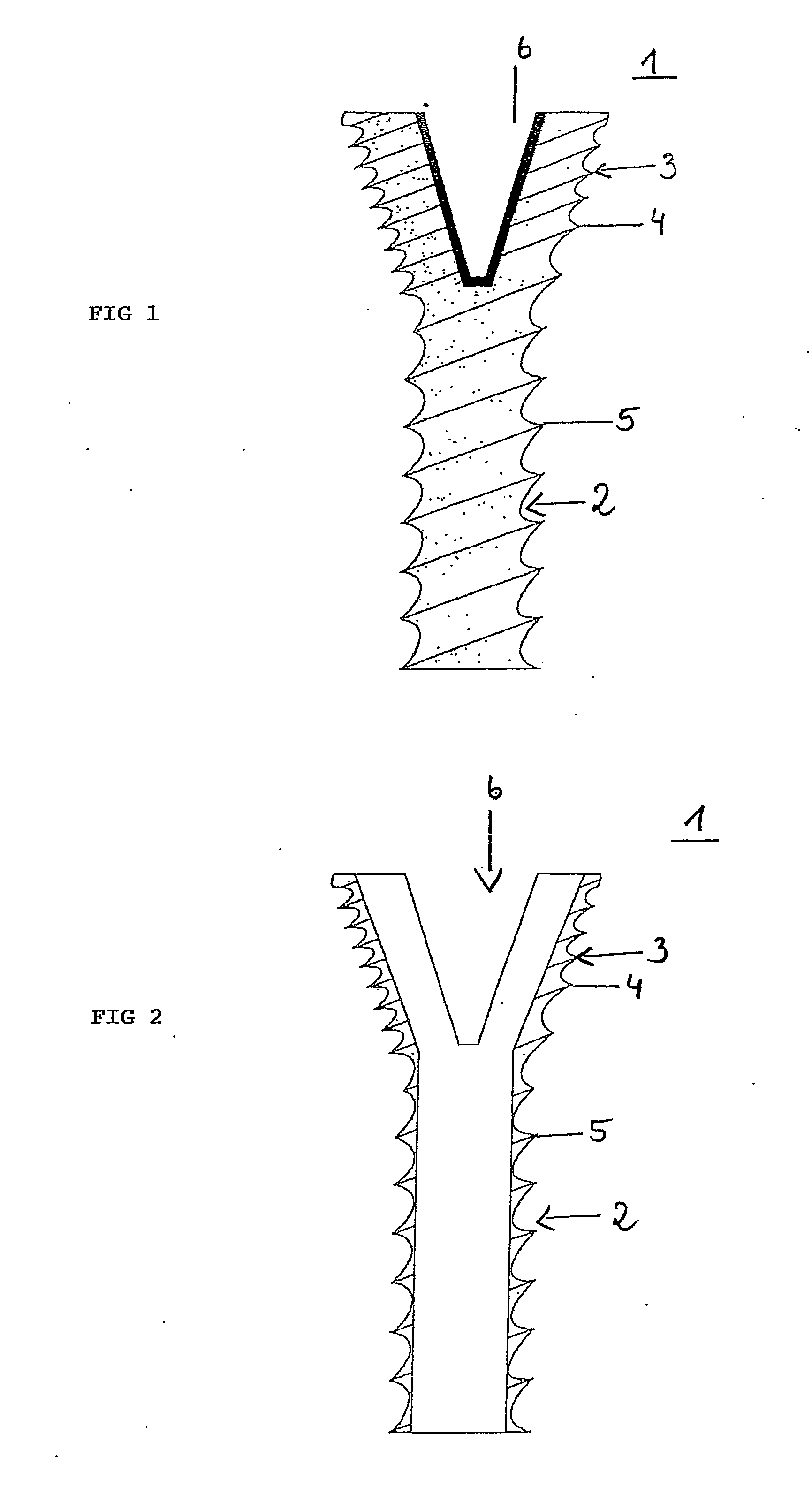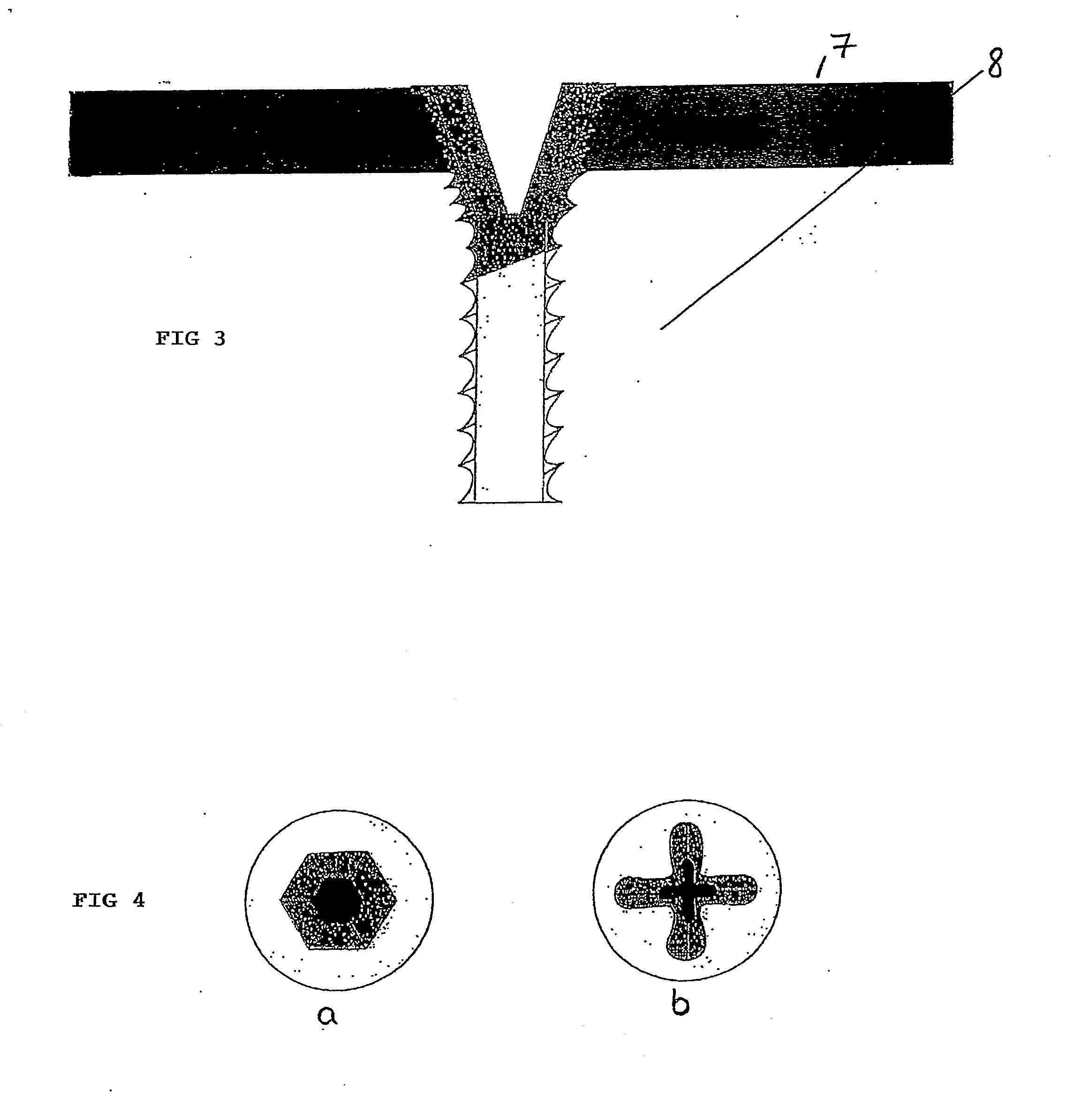Bone screw
a bone screw and screw body technology, applied in the field of bone screws, can solve the problems of long screws that cannot always be used, the screw length is too long, and the chips can be irritating adjacent tissues, so as to improve the arrangement of the tool engagement par
- Summary
- Abstract
- Description
- Claims
- Application Information
AI Technical Summary
Benefits of technology
Problems solved by technology
Method used
Image
Examples
example 1
[0042]Standard plates of titanium 1 measuring 125×20×2.5 (L×B×H) with 12 holes. Screwing of bone screws (type tifix® MINI 1—titanium 4 (high-strength pure titanium)) into synthetic bone, with different conical head geometry (14.5°, 16°, 17.5°) and defined screwing-in angles (5°, 10°). Starting torque=2.5-3 Nm.
example 2
[0043]Bone screws with a 17.5° conical head were tested at a screwing-in angle of 5° according to the test setup described in Example 1. In 3 of 5 cases, chip formation was visible in the blocked state.
example 3
[0044]Bone screws with a 16° conical head were tested at a screwing-in angle of 5° according to the test setup described in Example 1. In 3 of 5 cases, chip formation was visible in the blocked state.
PUM
 Login to View More
Login to View More Abstract
Description
Claims
Application Information
 Login to View More
Login to View More - R&D
- Intellectual Property
- Life Sciences
- Materials
- Tech Scout
- Unparalleled Data Quality
- Higher Quality Content
- 60% Fewer Hallucinations
Browse by: Latest US Patents, China's latest patents, Technical Efficacy Thesaurus, Application Domain, Technology Topic, Popular Technical Reports.
© 2025 PatSnap. All rights reserved.Legal|Privacy policy|Modern Slavery Act Transparency Statement|Sitemap|About US| Contact US: help@patsnap.com



